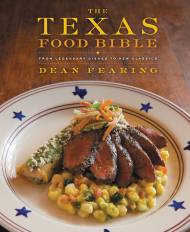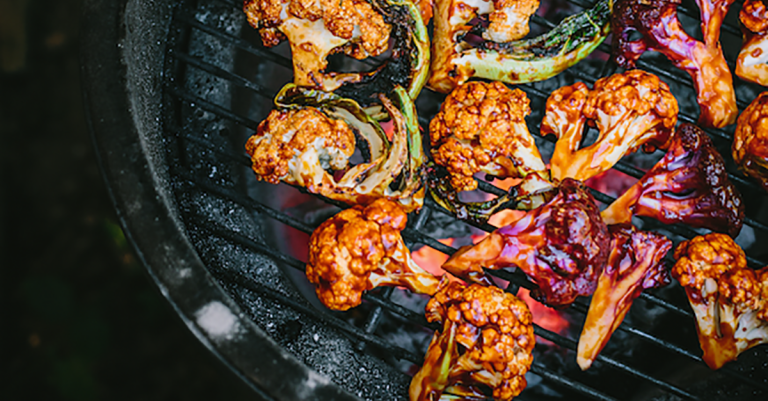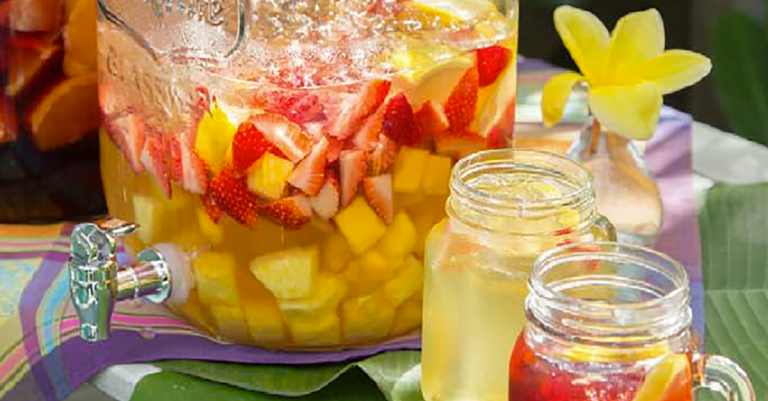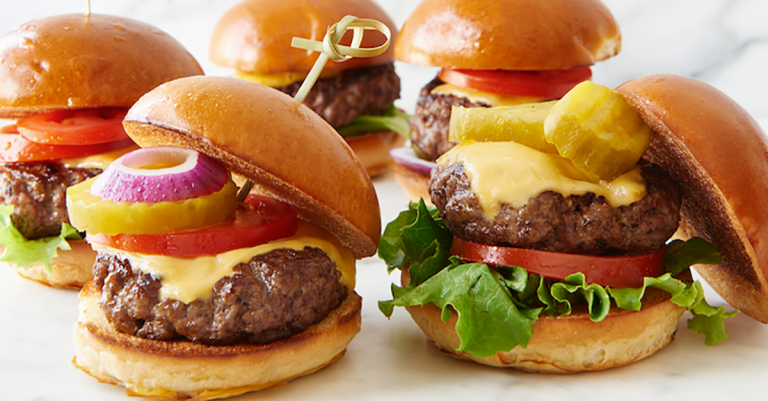Working the Grill Like a Pro
Dean Fearing Shares Grilling Tips
from The Texas Food Bible
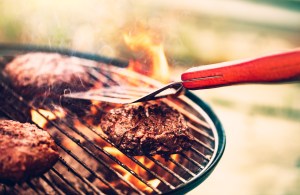
When Texans talk about grilling, they are talking about cooking over live coals, not gas heat. Perhaps this comes from the deeply held traditions of cowboys on the trail, when all meals were cooked on open fires. Grilling as we now know it is a form of quick cooking involving high, dry heat that effectively seals the exterior of the food being grilled while rapidly cooking the interior. The food is placed on a rack or grill with the heat directly radiating from below or above the grill rack. Grilling is often referred to as barbecuing, but barbecue also implies pre-marination of mopping with a sauce during the grilling process. Meats cooked by grilled acquire a toasty exterior that accentuates caramelization, resulting in a very desirable richness.
Although grilling can be done on a stovetop grill pan, this method does not achieve the same high quality of caramelization that is realized when grilled over hot coals. In Texas, the standard is high heat, and outdoor grilling is the method of choice, with the frequent addition of mesquite, hickory, or fruitwoods to heighten flavor. The heat should be hot enough to immediately char grill marks into the meat (or poultry, fish, or vegetable). In addition, it should be hot enough to seal the grill side of the exterior and cook the product about halfway through. This should take only a few minutes, the time will vary depending upon the food being grilled. The food should then be turned to allow the opposite side to seal and finish cooking. The heat is adjusted by moving the food away from or close to direct heat, not by allowing the fire itself to wax and wane.
The grill is ready when the lames have died down and the coals are burning red. If the coals have gone beyond red, the heat will not be high enough, and you will have to add more coals and wait for them to turn red. I recommend partially opening the bottom vent, as I think it help keep the fire hot. Opening and closing the vent is one way to control the temperature. For instance, if the flames are burning high, closing the vent slightly will calm them.
If using a gas grill, it should be preheated for at least 10 minutes. many gas grills now have a thermostat to gauge the internal temperature; and remember, you want it to be hot. If hot enough, the food should cook as quickly as it would on a wood- or charcoal-fired grill. Move the food away from the direct heat when necessary to ensure even grilling.
No matter the type of grill used, remember that all grilling should take no more than a few minutes. You should stand by the grill, ready to take action immediately should flare-ups occur. Simply move the food away from the flame and wait for it to die down. Do not spray with water or lower the lid. Water spray can cause the ash to rise and contaminate the food, and lowering the lid can cause the food to overcook.
Many cooks worry about undercooking foods on a grill, but it is more likely that meats, particularly, will be overcooked, as the high heat works its magic quickly. And overcooking is the killjoy of the great grilling; it dries out the natural juices, destroying both flavor and texture. Even the best sauce cannot fix overgrilled meat.
Fuel for the Grill
Wood and charcoal are the fuels of choice, I do not recommend charcoal briquettes, especially those presoaked with lighter fluid, as they impart an undesirable flavor to the food during grilling. Texans particularly love mesquite wood charcoal for the delicate Lone Star flavor it infuses into meat. For open-fire cooking, large pieces of wood can be used, but grilling is a bit tricky, as the wood tends to flare up in spots and the temperature is uneven. Foods grilled over wood charcoal take on a subtle flavor of the wood being used. Add a piece or two of aromatic wood on the rock bed above the heat source of the gas grill to achieve a similar effect.
Everyone loves Texas food and now, Dean Fearing, arguably the best chef in Texas, shares the top traditional and modern dishes from the Lone Star State.
By clicking ‘Sign Up,’ I acknowledge that I have read and agree to Hachette Book Group’s Privacy Policy and Terms of Use
